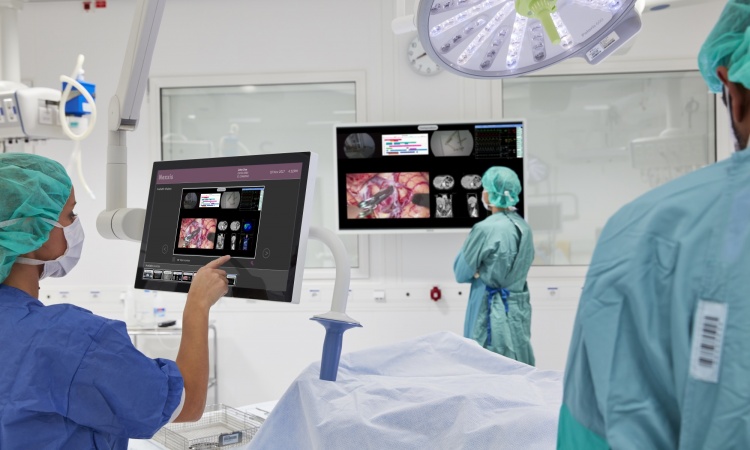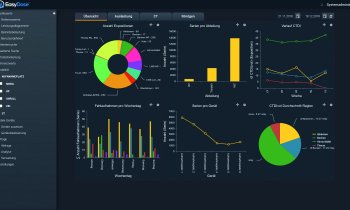Top quality screens increase diagnostic confidence
The Dienst Medische Beeldvorming (Medical Imaging Department) at Groeninge General Hospital, in Kortrijk, Belgium, which produces 150,000 radiology reports annually on four different sites, is totally filmless and paperless, relying on Barco's diagnostic display technology for the past decade. This year, due to its near proximity to Barco's headquarters, the hospital is to become a reference site for Barco.

Now it is the first to install a 6 Mega Pixel colour display system for MR/CT imaging, about which Dr Patrick Seynaeve, Head of Radiology at the AZ Groeninge Hospital, said: ‘One of the key points to decide on a medical screen is that the contrast is stable: If two radiologists look at the same image from different angles, nonetheless they must see exactly the same image. Second, the luminosity is much higher – up to 500 cd/m2 , instead of only 250 cd/m2 or less in a commercial display, which means, you can see more details. Noise reduction is also indispensible, because even the best machine cannot give a good image without noise. Not to forget, you have the 10-bits minimum look-up table (LUT) precision.’
Additionally, the lifetime guarantee of a medical display in a factory setting is five years, instead of only one or two. ‘We can check the quality of every screen in our department with Barco’s QA Web, and this helps us to plan our investments better. For example, if he PACS station monitors are visited differently, we can interchange them so that their lifetime ends at the same time,’ added radiologist Dr Olivier Vanovermeire.
For a radiologist, 91% accuracy in reading on-screen images is important, as highlighted in a 2008 study, carried out by Elizabeth A Krupinski, which compared the diagnostic accuracy of radiologists when viewing clinical images on a top-of-the-line medical grade colour display versus a top commercial off-the-shelf (COTS) screen. For the study, a set of 50 digital radiography chest images was selected; half contained a single pulmonary nodule; half were nodule-free. The study showed that medical-grade one-year-old colour displays yielded better diagnostic and search efficiency than COTS colour displays and thus they are recommended for primary reading if using colour displays. ‘This means that screens can increase our diagnostic confidence so we can work much faster’, Dr Seynaeve observed. ‘To produce 150,000 radiology reports annually, you must consider every link in the chain.’
01.07.2009











